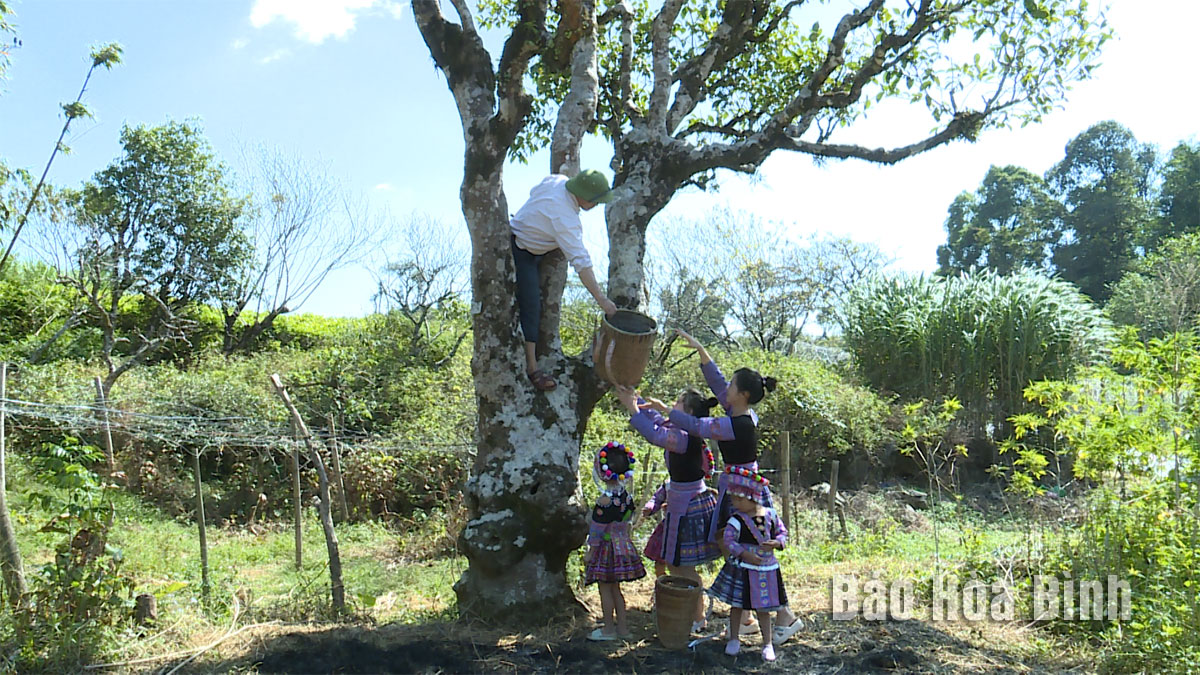
Hoa Binh Province currently has over 870
hectares of tea plantations, with six districts having concentrated tea
production areas that boast advantages in soil, climate, history, and
distinctive tea varieties: Yen Thuy, Lac Thuy, Da Bac, Mai Chau, Tan Lac, and
Luong Son.
The provincial agriculture sector has
implemented the provincial People's Committee's plan for sustainable,
multi-value tea development in Hoa Binh Province for the period 2024 - 2030.
According to the plan, by 2030, the province aims to stabilize the total tea
area at approximately 1,200 hectares, with a production target of 13.8 thousand
tons. Of this, 80% will be produced in a cooperative and linked manner,
ensuring traceability, food safety, and GAP standards; deeply processed tea
products will account for 20%; and 100% of the area will be managed, assigned
region codes, and have traceability as required for export.
The province also has guidelines on the scale
of tea-growing areas and the processing and diversification of products. For
the Shan tuyet tea area, Mai Chau district
is planned to have an area of 200 - 250 hectares; Da Bac district about 100 hectares; and Tan Lac district 50 hectares. The green tea area in Yen Thuy
and Lac Thuy districts is planned to have 400 - 500 hectares; Hoa Binh city and Luong Son district 250 - 300 hectares.
According to data from the Hoa Binh Provincial Party Committee, the industrial production index for the first six months of 2025 is estimated to have increased by 20% compared to the same period last year. This marks the highest year-on-year growth rate for this period since 2020.
In the first six months of 2025, Hoa Binh province’s export turnover was estimated at 1.145 billion USD, marking an 18.11% increase compared to the same period in 2024. Import turnover was estimated at $ 804 million, a 17.15% increase, which helped the province maintain a positive trade balance.
The lives of the ethnic minority farmers in Tan Lac district have gradually improved thanks to the new directions in agricultural production. This is a testament to the collective strength fostered through the professional associations and groups implemented by various levels of the district’s Farmers’ Union.
With the motto the "product quality comes first,” after nearly one year of establishment and operation, Muong village’s Clean Food Agricultural and Commercial Cooperative, located in Cau Hamlet, Hung Son Commune (Kim Boi district), has launched reputable, high-quality agricultural products to the market that are well-received by consumers. The products such as Muong village’s pork sausage, salt-cured chicken, and salt-cured pork hocks have gradually carved out a place in the market and they are on the path to obtaining the OCOP certification.
In the past, the phrase "bumper harvest, rock-bottom prices" was a familiar refrain for Vietnamese farmers engaged in fragmented, small-scale agriculture. But today, a new spirit is emerging across rural areas of Hoa Binh province - one of collaboration, organisation, and collective economic models that provide a stable foundation for production.
Maintaining growing area codes and packing facility codes in accordance with regulations is a mandatory requirement for agricultural products to be eligible for export. Recently, the Department of Agriculture and Environment of Hoa Binh province has intensified technical supervision of designated farming areas and packing facilities to safeguard the "green passport" that enables its products to access international markets.


